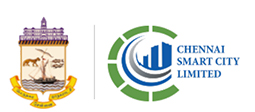KulakkaraiKulam
KulakkaraiKulam pond is located in southern part of Vichur-Eachankuzhi Road. This pond is roughly circular in shape and was dried up during the time of survey. The water spread is fully infested with water hyacinth and bund was fully encroached by residences. Both the sullage and sewage from the residential area was being diverted into the pond and the water was fully polluted by domestic liquid waste and solid waste dumping. The pond has its own in-situ catchment. Now the pond is fully restored under the Chennai Smart City project funds.
AREA: 6474.97601 Sq.mtrs ZONE: 3 DIVISION: 30
This pond is in Division 30 of Zone 3 and is located on the Madhavaram Redhills Road. It is located to the west of the road. The pond is located at North Latitude 13 9'10.30"and East Longitude 8013'38.22"
The pond is roughly circular in shape. There is no water in the pond during the time of survey. The water spread is fully infested with water hyacinth. The bund of the pond is fully encroached by residences. With bund fully encroached, the water spread is slowly getting encroached. Both the sullage and sewage from these residences is being diverted into the pond and the pond water is fully polluted by domestic liquid waste. The solid waste dumping in the bund and water spread still aggravates the level of pollution. There is no specific catchment to the pond but for its own in-situ catchment. The area around the pond is fully densely urbanized. There is no inlet or outlet to the pond provided. Based on the interaction with the local community, it is inferred that the pond use to hold water for about 9-10 months in the past and was used for washing and bathing by the local community; but at present it is considered as a menace due to the level of pollution happening in the pond. Based on the TSS output, it is inferred that the total area of the pond is 2703.6 sq.m and the total length of the bund is 202.94 m. The average depth of the pond is about 2.55 m.
The imagery extracted from google earth on 07.02.2017 and 27.08.2004 is presented below clearly shows the removal of tress on the bund which was done to encroach by the residents all around.
Google Image of the pond as on 07.02.2017 (LEFT) and 27.08.2004 (RIGHT)
The actual volume stored in the tank during 1987 a normal rainfall year - after losses due to evaporation and recharge is given in the following Graph The total storage of the tank in its present condition is estimated at 6759 cu.m Based on this estimate, there will be water available in the pond for almost 57 days in a year. At no point of time, the pond overflows in a normal rainfall year. The total inflow to the tank in a normal rainfall year is estimated at 4174.85 cu.m; the total groundwater recharge will be 1202.5 cu.m. The estimate was made in an excess rainfall year to see the inflow and outflow status. The actual volume stored in the tank after losses due to evaporation and recharge is given in the following graph.
Based on the field observations and inferences, followed by the data analysis, following were the list of activities proposed for renovating the pond.
- Encroachment so high in the bund of the pond, that even machinery cannot be mobilised to delist the pond in its present stage. Hence the encroachement on the bund should be removed and the existing bund should be established first.
- The sullage diversion into the pond should be stopped. This could be done by insisting the residents to opt for soak pits in their residences and not to allow the sullage and sewage into the pond.
- Dumping of solid waste should be stopped.
- The existing water should be dewatered and disposed.
- The pond should be desilted and water hyacinth removed.
- The bushes all around the bund should be removed and the pond should be provided with fencing and protected from further encroachment.
- After completing the above tasks it is better to retain the water body as such for 2 � 3years after which the water body can be converted into a water harvesting and recharge system. Introducing recharge system at this stage would lead to the pollution of groundwater and hence it is not recommended.




